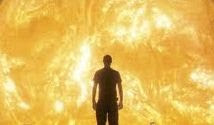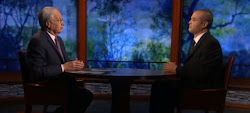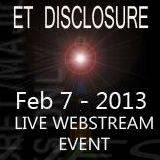Dear Friends,
http://www.philipcoppens.com/ls_2.html
Love and Light.
The Lost Symbol: The Lost Mind
Woven in between the fabric of The Lost Symbol is the story of the modern exploration of the mind, one that is barely reported in mainstream science journals or the media, even though it should often be frontpage news across the world.
Philip Coppens
 With an initial print run of five million copies, “The Lost Symbol” instantly became the biggest-selling adult hardback of all time. Most attention at the release of the book went to the Masonic themes woven into the storyline, seeing this is what was likely to create the potential controversy. But there is a far more interesting and bigger storyline that forms the veritable spine of the story: the fact that advances in modern science have been made that reveal deep insights into the afterlife, the nature of reality, if not God.
With an initial print run of five million copies, “The Lost Symbol” instantly became the biggest-selling adult hardback of all time. Most attention at the release of the book went to the Masonic themes woven into the storyline, seeing this is what was likely to create the potential controversy. But there is a far more interesting and bigger storyline that forms the veritable spine of the story: the fact that advances in modern science have been made that reveal deep insights into the afterlife, the nature of reality, if not God.
In his now typical style, at the beginning of the book Brown points out that the Institute of Noetic Sciences is a real organisation. The Institute was the brainchild of astronaut Ed Mitchell, who founded “IONS” after having a deep spiritual revelation while in space. After having walked on the moon, he realised that the next frontier to explore was the mind and human consciousness and hence, in 1973, the Institute was founded. The word noetic itself is derived from the Greek “nous” – the very word the Greeks used for the type of knowing that came through a personal revelation, normally acquired by initiation into a mystery tradition.
Since 1973, the Institute has been involved in pioneering research, trying to bring the study of consciousness firmly within the bailiwick of “normal science”, which is largely hands-off when it comes to tackling these topics. In “The Lost Symbol”, Brown goes for one, fictional example, of how a person’s soul is weighed when leaving the body of the deceased. The fact of the matter is that truth is far more interesting than this example, and Brown knows it, and points this out, though he does not truly highlight.
Early on in the book, Brown mentions Lynne McTaggart’s 2007 book “The Intention Experiment”, a book that subtitles “Use Your Thoughts to Change the World”. That is indeed the central message that Brown imparts to his readers. Throughout the book, he argues that human thought, if properly focused, has the ability to affect and change physical mass. It is, in fact, the basic tenet of quantum physics, which argues that human consciousness – thought – determines the outcome of what happens in our reality. To paraphrase Brown: if we can have “focused thought”, “we are the masters of our own universe”. Or that “Living consciousness somehow is the influence that turns the possibility of something into something real.”
Lynne McTaggart’s first book, “The Field”, published in 2001, focused on the so-called Zero Point Field, which is that “all matter in the universe is connected on the subatomic level through a constant dance of quantum energy exchange”. In the 1970s, physicist Hal Puthoff discovered that the constant energy exchange of all subatomic matter with the Zero Point field accounts for the stability of hydrogen atom, and the stability of all matter. Remove “the field”, and all matter would collapse in on itself. The universe would simply cease to exist.
 McTaggart defined consciousness as “a substance outside the confines of our bodies – a highly ordered energy with the capacity to change physical matter. Directing thoughts at a target seemed capable of altering machines, cells, and indeed, entire multicelled organisms like human beings.” She thus highlighted that far from being a by-product of evolution, consciousness is central to the universe: we think, therefore we create reality.
McTaggart defined consciousness as “a substance outside the confines of our bodies – a highly ordered energy with the capacity to change physical matter. Directing thoughts at a target seemed capable of altering machines, cells, and indeed, entire multicelled organisms like human beings.” She thus highlighted that far from being a by-product of evolution, consciousness is central to the universe: we think, therefore we create reality.
Indeed, the greatest scientific revolution of the 21st century will likely come from scientific experiments based on quantum physics and exploring consciousness, which bring science closer towards the bailiwick of religion, addressing the very topics Brown has singled out: death, God, etc. And this revolution is closer at hand than we think – and traditional scientists – and most religious leaders – would like to believe.
Brown points out and others, like McTaggart, have given an overview of the research on this subject to date. Much of the original research occurred either behind the closed doors of CIA affiliates or in little known research facilities, like the Institute of Noetic Sciences or the Esalen Institute – though Brown does not refer to the latter in his book. Indeed, it is now an established fact that the CIA throughout its history experimented with the mind, sometimes for less than noble ends. It were these “mind control” experiments, the most notorious of which was Project MK-ULTRA, which were brought to public attention in 1975 by the US Congress in the aftermath of the Watergate scandal. But in as early as 1973, CIA Director Richard Helms had ordered all project files destroyed, which means that the true extent of decades-long of covert scientific experimentation on US citizens was virtually impossible to reconstruct.
From the available evidence, Senator Ted Kennedy summarised how “the Deputy Director of the CIA revealed that over thirty universities and institutions were involved in an ‘extensive testing and experimentation’ program which included covert drug tests on unwitting citizens ‘at all social levels, high and low, native Americans and foreign.’ Several of these tests involved the administration of LSD to ‘unwitting subjects in social situations.’ At least one death, that of Dr. Olson, resulted from these activities. The Agency itself acknowledged that these tests made little scientific sense. The agents doing the monitoring were not qualified scientific observers.”
Although the CIA insisted that MK-ULTRA-type experiments had been abandoned by the early 1970s, CIA veteran Victor Marchetti stated as late as 1977 that this was not the case.
Dan Brown does not touch upon these mind control experiments in “The Lost Symbol”, but does highlight another CIA project that ran in the 1970s and which focused on the mind: remote viewing. This project addressed the question whether or not the mind could retrieve information that was not available by technical means. The project was outsourced to SRI – Stanford Research International – and was lead by Hal Puthoff and Russell Targ, two qualified scientific observers. In subsequent years, the Defense Intelligence Agency took over the project and continued to run it as a highly classified project. When the existence of the project was declassified in 1995, the release was accompanied by much – carefully created – public ridicule, so that the implications of the central findings of the project would hopefully be overlooked. Those were that the mind was indeed able to “see” things no satellite or other instrument could, including locations of nuclear submarines, and much more.
Indeed, upon declassification, it was agreed that remote viewing had worked; the “problem” was that the CIA claimed that the study was also meant to find out “how” it worked, and that “problem” had not been solved in more than twenty years of research. Hence, they argued, it was best to stop the project.
 But just like there is controversy over whether or not the mind control projects finished when the CIA said they did, questions remain as to whether the CIA or other factions of the American intelligence community truly have stopped their remote viewing unit(s). After all, they themselves agreed that they had specific intelligence gathering benefits, so why should they be stopped?
But just like there is controversy over whether or not the mind control projects finished when the CIA said they did, questions remain as to whether the CIA or other factions of the American intelligence community truly have stopped their remote viewing unit(s). After all, they themselves agreed that they had specific intelligence gathering benefits, so why should they be stopped?
Finally, though Brown takes a snap at so-called “spoon bending” – a clear reference to Uri Geller – it was actually Uri Geller who was brought from Israel, with the full agreement of the Isreali intelligence agency Mossad and the CIA, to the United States and SRI to be tested as part of these remote viewing projects. When Geller left the project, he soon became notorious for his spoon bending and now considers himself to be part and parcel of the entertainment industry. But the now declassified scientific experiments at SRI show that during the experiments, Geller was able to influence computers – some of which were in charge of military applications – as well as demonstrating the power of the mind on numerous other occasions, including driving while blindfolded. Such displays convinced the participating physicists at SRI and other laboratories time and again that the mind was indeed the master of reality – thus proving the basic tenet of quantum physics.
Of course, the CIA was not the only one to study the mind. Very intriguing conclusions were reached by Fritz-Albert Popp, who was the first to discover that all living things emit a tiny current of light. Indeed, Popp himself identified how tiny frequencies were mainly stored and emitted from the DNA of cells, which is a conclusion also reached by anthropologist Jeremy Narby, when he studied DNA and the manner in which shamans seemed to be able to access information not accessible to the “ordinary” senses… a finding therefore on par with the CIA remote viewing experiments.
Gary Schwartz and Kathy Creath followed in the same vein and were the first to show that light emanated from a living thing: a geranium leaf. Others have since been able to show how streams of light flow from a healer’s hands. As such, McTaggart argues that “if thoughts are generated as frequencies, healing intention is well-ordered light.”
Taking it one step further is the work of British inventor Harry Oldfield, who has created photon cameras. These instruments are able to photograph photons, particles of light that are everywhere, but not visible to the naked eye. His research has shown how the crown chakra of a drug addict is indeed totally “open”, “leaking” energy, and how energy can be seen to become more organised during meditation, especially group meditations, affecting specifically those people in the group that were indeed consciously meditating, rather than just “being there”. Other research has shown that the concentrated thinking of a group has an exponential effect: it is far more influential than if the members of the group were concentrating on an individual basis.
 All of this confirms what McTaggart and many others have identified: in order to have the most powerful effect, a healer or sender needs to become “ordered”: he needs to be attentive, believe, be motivated and compassionate. McTaggart also refers to the Love Study, conducted by Elizabeth Targ and Marilyn Schlitz, the latter of the Institute of Noetic Sciences, and specifically one of its resident researchers, Dean Radin. The conclusion was that “intention is the perfect manifestation of love. Two bodies become one.” This finding has enormous implications for the concept now known as “soul mates”: how at the dawn of time, “one soul” – one consciousness – beating as one, decided to split and incarnate in two bodies – something already highlighted in the writings of the Greek philosopher Aristotle. And though Brown does not highlight the concept of soul mates, he does argue that intention is a learned skill and forms the missing link between modern science and ancient mysticism… of which Aristotle is a prime example.
All of this confirms what McTaggart and many others have identified: in order to have the most powerful effect, a healer or sender needs to become “ordered”: he needs to be attentive, believe, be motivated and compassionate. McTaggart also refers to the Love Study, conducted by Elizabeth Targ and Marilyn Schlitz, the latter of the Institute of Noetic Sciences, and specifically one of its resident researchers, Dean Radin. The conclusion was that “intention is the perfect manifestation of love. Two bodies become one.” This finding has enormous implications for the concept now known as “soul mates”: how at the dawn of time, “one soul” – one consciousness – beating as one, decided to split and incarnate in two bodies – something already highlighted in the writings of the Greek philosopher Aristotle. And though Brown does not highlight the concept of soul mates, he does argue that intention is a learned skill and forms the missing link between modern science and ancient mysticism… of which Aristotle is a prime example.
In short, today, scientists accept – some reluctantly – that physical matter isn’t solid and stable. At a quantum level, reality resembles unset jelly. Living consciousness somehow is the influence that turns the possibility of something into something real. How this works is secondary; it works. Full stop. And it is the central message that Brown tries to impart in this book, and which we should learn as soon as possible and which is hopefully a message that “The Lost Symbol” is helping to spread.
Indeed, to quote McTaggart once again, the “Universe is democratic and participatory”. We create reality, which is the role of Free Will in the universe: the Divine Plan is the potential, and we manifest it. “Every movement we make appears to be felt by the people around us.”
Brown does not use the work of Puthoff, Schwartz or Poff, but instead uses historical examples, such as a statement by Albert Einstein: “Behind the secrets of nature remains something subtle, intangible, and inexplicable. Veneration for this force beyond anything that we can comprehend is my religion.”
He has the dean of Washington National Cathedral explain how the power of prayer, and healing prayer circles, can produce miracles. Without making it too explicit, he argues that Jesus was not unique in being able to perform miracles. Brown argues that each individual has the potential to create miracles: “The question was not whether God had imbued man with great powers… but rather how we liberate those powers.” He quotes from Jesus Christ, “The kingdom of God is within you”, but also from other religions, such as “Know Thyself” (Pythagoras) or “Know ye not that ye are gods” (Hermes Trismegistos).
 But however controversial and trendsetting Brown is, his entire oeuvre has never been original. As such, Brown is not the first to play with “intent” in his novels. Another bestselling author, Kathleen McGowan, has taken the notion of the mind and intent much further, specifically in her 2009 book “The Book of Love”. McGowan draws attention to the hieros gamos, in which two soul mates unite in a “sacred marriage”, whereby, with intent, a specific soul is willed to be born in the body that is being created by its two parents in the sexual act. Though this might sound extreme, there are numerous examples, both from mythology (Isis and Osiris creating Horus), as well as history (as described by Archie Roy in The Eager Dead) that this is a primary mystical tradition, practiced at least from Egyptian times until this very day. It underlines that ancient mystical traditions – to which Brown frequently refers in his book – were perfectly aware of the power of intent, and applied it to everything that they felt was sacred: whether the creation of divine offspring, or the numerous religious monuments we see, whether they are Egyptian temples or Gothic cathedrals like Chartres.
But however controversial and trendsetting Brown is, his entire oeuvre has never been original. As such, Brown is not the first to play with “intent” in his novels. Another bestselling author, Kathleen McGowan, has taken the notion of the mind and intent much further, specifically in her 2009 book “The Book of Love”. McGowan draws attention to the hieros gamos, in which two soul mates unite in a “sacred marriage”, whereby, with intent, a specific soul is willed to be born in the body that is being created by its two parents in the sexual act. Though this might sound extreme, there are numerous examples, both from mythology (Isis and Osiris creating Horus), as well as history (as described by Archie Roy in The Eager Dead) that this is a primary mystical tradition, practiced at least from Egyptian times until this very day. It underlines that ancient mystical traditions – to which Brown frequently refers in his book – were perfectly aware of the power of intent, and applied it to everything that they felt was sacred: whether the creation of divine offspring, or the numerous religious monuments we see, whether they are Egyptian temples or Gothic cathedrals like Chartres.
As mentioned, in the book, Brown tackles how faith and intention are also pivotal in creating miracles and this theme too is explored by McGowan, in “The Source of Miracles”, in which she argues that for a very long time, she believed – like so many others – that miracles the way in which they were described in the Bible, were allegories… until a veritable miracle happened and she realised that there were real miracles, within the reach of every human being. And what does it take to create miracles? Focused thought and “applied thinking”, to unlock the divine potential that is resident within each one of us.
As such, “The Lost Symbol” is part of a wave of books, whether they are scientific, novels or self-help, that are beginning to highlight how, almost a century after quantum physics posited that conscious thought was central to our reality, we are indeed masters of our own universe. The question of “The Lost Symbol” is whether its readers will pick up this central message, which Brown has largely coded – rather than ostentatiously revealed – into this novel.
From: PHILIPS COPPENS
http://www.philipcoppens.com/ls_2.htmlAuthor: Philip Coppens





No comments:
Post a Comment